Tuesday Morning I had tempered hopes for a warbler presence at Melody’s Grove, but I barely moved into position when a faint movement of yellow caught my eye behind a branch up ahead. As it moved again I caught a hint to gray, and the 2 colors combined on a warbler-sized bird elevated my attention level. I checked with binoculars as the bird popped into the open – and viola, a Mourning Warbler appeared in the morning light! I quickly switched my binoculars for my camera as the warbler foraged its way in my direction along the edge of the trees and low shrubs.
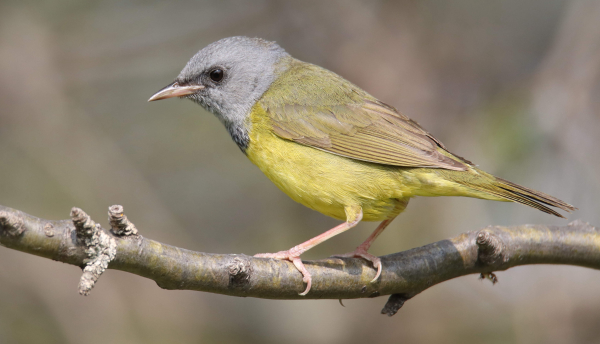
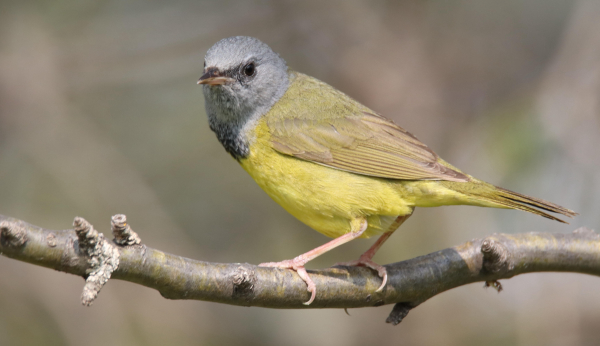
Mourning Warblers are a favorite spring migrant, partly because I see so few of them, and usually they are rather slow-moving, edging into the open at ground level or in vegetation just above the ground. This one was by far the most active Mourning Warbler I’ve ever encountered, and it was moving in my direction quickly. I began trying to follow its advance through my camera lens, but it wasn’t an easy task, and my heart was quickly racing faster than the warbler’s movements. I tried photographing as it entered openings in the newly leafing bushes, but this Mourning Warbler was fast.
Suddenly, it was moving from branch to branch just a few feet outside my car’s open window, and bam, it stopped in the open broadside! I was focused on the bird and took several photos as it seemed to contemplate its next move. Not only was the bird perched in the open, but there were no plant materials for a distance behind it, providing a fairly unobstructed background. The little warbler continued to advance through bushes for another 20 feet, then flew just above my mobile blind’s windshield to land in a tall bush on the other side of my car.
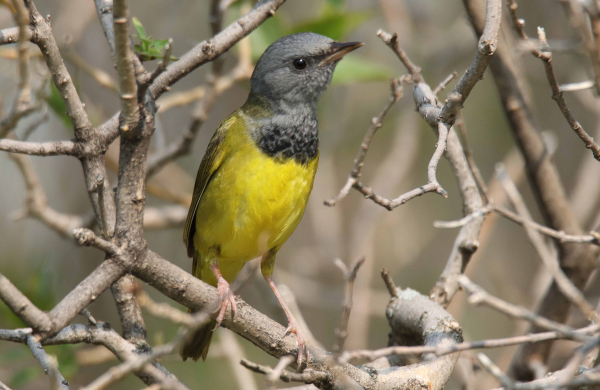
Now the Mourning Warbler was foraging between me and the sun, a worst-case scenario for lighting, and I was actually watching it through my windshield as it foraged just a few feet away. I was very worried that if I tried to sneak out of my car to reposition between the bird and the sun to utilize the nice morning sunlight that I might disturb the warbler, but it was now or never. I slipped out of my car and carefully walked a slow, wide loop to the other side of the warbler’s position, and bam, it worked; plus the active Mourning Warbler was foraging in my direction.
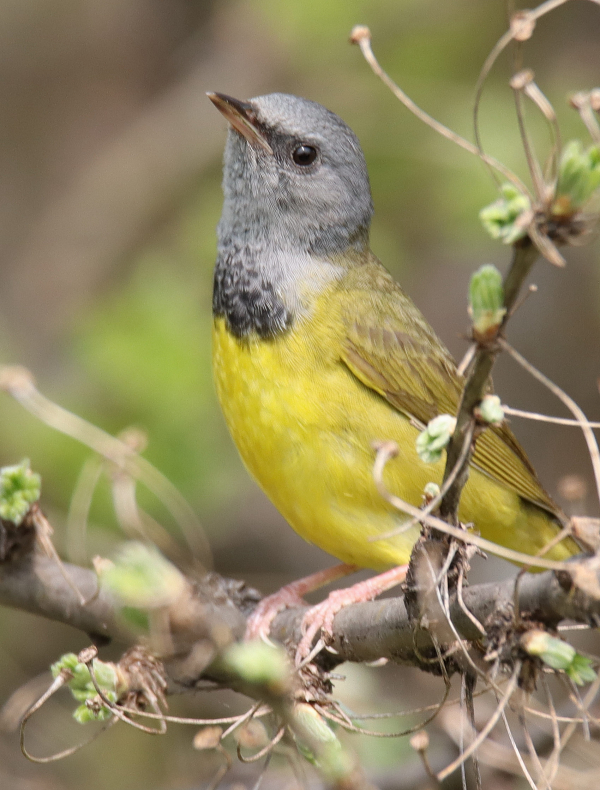
This Mourning Warbler was moving uncharacteristically fast through the trees and bushes, which made focusing on it a challenge, especially with the wealth of plant material surrounding it (600mm zoom, f-6 aperture, 1/500 shutter speed, ISO 400).
|
I followed the advance of the bird as it worked its way along the top of low trees and tall bushes, but it also moved down to ground level at one point. As with most warblers, the photo action was fast and furious as the bird moved through vegetation, and it was tough to get a focus on the fast-moving bird. But boy was it was fun keeping up with its rapid movements, trying to get a photo or 2 as it paused in semi-open spots. Toward the end of the habitat the Mourning Warbler moved to the other side of a tall bush, and I couldn’t relocate it. Nonetheless, I had followed it about 100 feet over a few minutes – providing some great fun and a couple photo chances.
I returned to my parked blind, and as with other exciting interactions photographing a sought-after bird, I relaxed but felt a sense of emptiness. Other birds availed themselves nearby – a Red-eyed Vireo, a Magnolia Warbler, a couple male Yellow Warblers, and a few female or first-spring Yellow-rumped Warblers. But none of those birds kindled the level of excitement that the Mourning Warbler did – but suddenly there it was again!
Apparently doubling back on a returning circuit, the fast-moving bird stayed lower this time, but provided a few more photos as it moved through vegetation. In no time it was foraging right outside my window again, and this time it continued along the wooded edge behind my position. At that point I had to open my door to be able to twist around and photograph the bird as best I could as I followed its harried movements through my camera lens. And then it was gone.
I continued to watch for more photo opportunities, and even observed another Magnolia Warbler and a pair of Rose-breasted Grosbeaks, but I had work to do – Tuesdays are the day we publish the weekly issue of The Birding Wire, which arrives for you by email Wednesday morning. So I hustled back to the office, prepared this article, edited the morning’s Mourning Warbler photos, and put the final editing touches on this issue – Hope you like it!
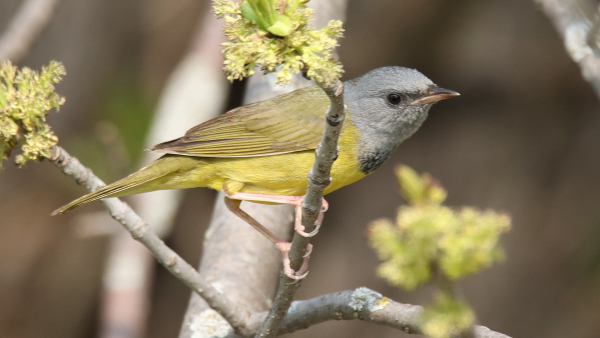
It’s been quite a week, starting with the arrival of Baltimore Orioles and Orchard Orioles, adding a new species to my Yard List – a Chestnut-sided Warbler – and many first birds of spring – including the Magnolia Warblers and Red-eyed Vireo this morning, along with the active Mourning Warbler. These species indicate that the second group of songbird migrants is beginning to arrive, overlapping with the first group. It’s about to get really exciting in the northland of Dakota country, and I hope the following days of May are especially fulfilling for you and for me – Good Luck!
Article and photographs by Paul Konrad
Share your bird photos and birding experiences at editorstbw2@gmail.com